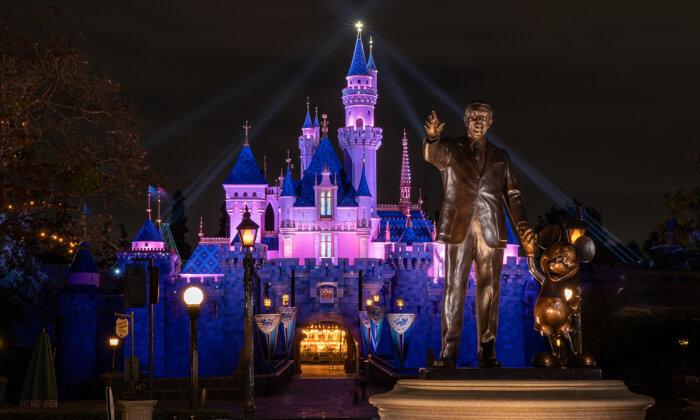A small strip of city-owned road in Anaheim, California—known as Magic Way—has become a point of contention between residents and Disneyland Park.
The popular theme park has announced plans to purchase the 1,150-foot-long side street, which runs between Disneyland Drive and South Walnut Street, as well as two other local roads, Hotel Way and a portion of Clementine Street, from the city as part of its DisneylandForward expansion efforts, KTLA 5 reported.
If the proposal is approved, the theme park giant would shell out $40 million to purchase the three city streets.
“As part of Disneyland Forward, the proposal for Magic Way is to really transition it into a pedestrian walkway,” Erin Ryan, a spokesperson for the City of Anaheim, told the news station. “There would still be some cars on that road—there would absolutely be access for emergency vehicles to drive on Magic Way—but it won’t be a street as it is today.”
Magic Way features entrances to the Disneyland Hotel and Downtown Disney, as well as several of the theme park’s parking structures.
Some Anaheim residents spoke out against the sale during a Planning Commission meeting on Monday, specifically noting their use of Magic Way as a means to circumnavigate congested roads to get to the Interstate 5 freeway.
“Magic Way is near and dear to my heart. I love Magic Way,” local resident Randy Lewis said during the meeting, per KTLA 5.
“I do not love the idea of closing Magic Way,” he continued. “It’s a great way for residents to bypass a lot of traffic.”
Contention Over Magic Way
In response to mounting concerns over Disney’s intended purchase of the small side street, Joe Haupt, a consultant for the company, shared a traffic study Disney had conducted of Magic Way. The study was conducted from Jan. 31 to Feb. 4 and analyzed traffic patterns on weekdays and over the weekend. It also collected data during popular times for rush hour traffic.The study found that 99 percent of Magic Way’s traffic was Disneyland-related. During peak morning hours, only 30 cars utilized Magic Way to bypass traffic en route to the freeway.
“Of the 11,153 vehicles that traverse Magic Way on a daily basis, 11,053 of them are either departing or arriving at a Disney property,” Mr. Haupt shared during Monday’s meeting. “Less than 100 are non-Disney users.”
Jessica Good, director of external communications at Disneyland Resorts, told The Epoch Times via email that the data “confirmed basic and long-held traffic circulation assumptions” about traffic movements on Magic Way.
“We are confident in this raw data,” she said. “Traffic was counted by video and the consultant was able to count and track the paths of travel. Therefore, any trips that turned east on Magic Way and then turned north on Disneyland Drive were not Disney trips as they were not entering a Disney parking structure or other Disney property.”
Although Disney’s study revealed that few locals used Magic Way as a shortcut, it did indicate that the road was heavily trafficked by pedestrians—hence the theme park’s plans to turn it into a dedicated pedestrian walkway.
DisneylandForward
The launch of Disney California Adventure Park in 2001 marked Disney’s most recent major expansion, per Mickey Visit.In January, Disney unveiled plans to spend $2.5 billion over the next 10 years to fund its latest multi-year expansion proposal, per Fox 11.
Disneyland also plans to erect additional parking structures east of the theme parks and build footbridges across Harbor Boulevard and Disneyland Drive.
“Anaheim is open to evaluating DisneylandForward because of what visitors mean to our city,” the statement continues. “Visitors account for more than half the revenue we use to serve our residents with police, fire, libraries, community services and to pay down city debt.”
The City of Anaheim added that “continued growth of The Anaheim Resort helps [it] serve residents, businesses and visitors” alike.
Other key initiatives include $8 million toward park improvements throughout the resort area and Anaheim at large, with examples given of playgrounds, dog parks, and athletic courts.
The community benefits also describe an $85 million contribution “to improve traffic flow, pedestrian circulation, and safety.” About $40 million of this would be used to “take over the responsibility” of the aforementioned city-owned streets, with the remaining $45 million going toward general transportation improvements, including bike lanes and pedestrian bridges.







